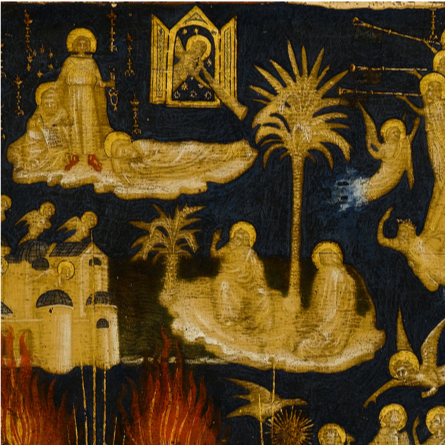Fall 2020 Workshop Talks
Watch recordings below of scholars presenting their current work in an informal seminar-style digital gathering, followed by questions and discussion.
Dragons and Dragon Kings in Chinese Painting
October 8, 2020
Dr. Jacqueline Chao, Senior Curator of Asian Art at the Crow Museum of Asian Art of The University of Texas at Dallas
Dr. Jacqueline Chao, Senior Curator of Asian Art at the Crow Museum of Asian Art of The University of Texas at Dallas discusses the role and representation of the Chinese dragon, particularly the dragon king, in Chinese Buddhism and Buddhist art. In early Chinese Buddhist mythology, the Chinese dragon serves as one of the eight protectors of the Dharma (tian long ba bu 天龍八部), and we find that the Sanskrit terms for nāgaand nāgarāja(serpent-like creatures in early Indian mythology that play prominent roles in early Indian Buddhist texts) were translated into Chinese as dragon long(龍) and dragon king long wang(龍王). By highlighting a few Chinese artworks that include illustration of the Chinese dragon king as influenced by the transmission of Buddhism from India to China, this presentation illuminates the unique role of the Chinese dragon and dragon king in Chinese Buddhism, as well as explores the transformation of its painted image.
Artists’ Response in a Pandemic: COVID-19 and Influenza 1918
October 15, 2020
Bonnie Pitman, Distinguished Scholar, UT Dallas
The Spanish Flu of 1918-1920 has recently had renewed public interest in light of the COVID-19 pandemic. Artists of the early twentieth century responded to the turbulent times and huge loss of life through art historically traditional media such as documentary photos, billboards, and painted portraits of friends and family. Contemporary artists have been able to respond more quickly over the last several months, using new media and social networks to reach wide audiences. Compared to the paintings of Edward Munch and Egon Schiele, the immediacy and intimacy of new media communicates artists’ more direct, personal feelings of loneliness and the physical emptiness of space, as well as documents the virus’s impact on individual victims and communities.
Materiality and Revelation in fourteenth-century Naples: a new proposal for the function and configuration of the Stuttgart Apocalypse Panels
November 3, 2020
Dr. Sarah Kozlowski, Associate Director, Edith O’Donnell Institute of Art History at the University of Texas at Dallas and Director, Center for the Art and Architectural History of Port Cities
Since they first appeared in the art historical literature in 1905, the so-called Stuttgart Apocalypse Panels, which as a pair form a vast narrative panorama of scenes from the Book of Revelation painted in cameo-like monochrome against a deep lapis lazuli ground, have counted among the most dazzling and enigmatic objects to emerge from the Angevin court of Naples in the earlier fourteenth century. Held since the 1970s in the collection of the Staatsgalerie Stuttgart, the panels’ iconographic program, narrative structure, and relationship to contemporary theological debates at the Neapolitan court are well understood, but their intended function and configuration have remained an open question.
This project draws on the findings of a recent technical study and assembles a body of comparable objects of a related format to offer a new proposal for the panels’ original physical context and to explore how their materials and movement structured the experience of their first owners. At stake is our understanding of how painters at the court of Naples investigated and thematized the representational powers and limits of the medium of panel painting.
Recording currently unavailable.

The Shifting Iceberg: Julian Charrière and the Future of Romanticism
November 17, 2020
Dr. Katherine Brodbeck, Hoffman Family Senior Curator of Contemporary Art at the Dallas Museum of Art discusses the video, photography, and sculpture of artist Julian Charrière in light of the anthropocene and the legacy of romanticism.



